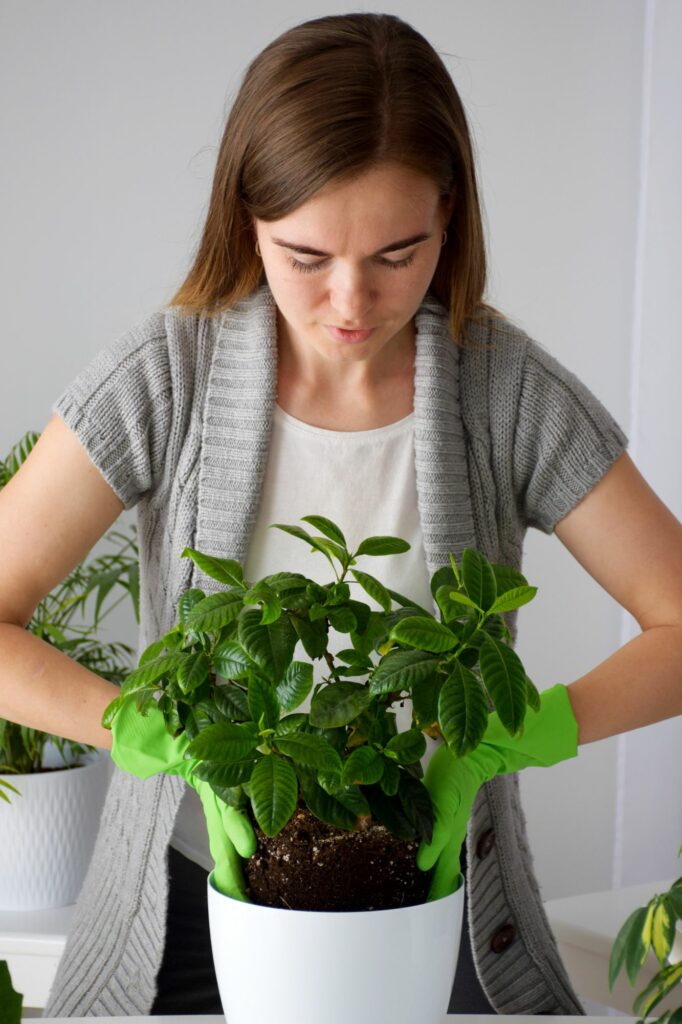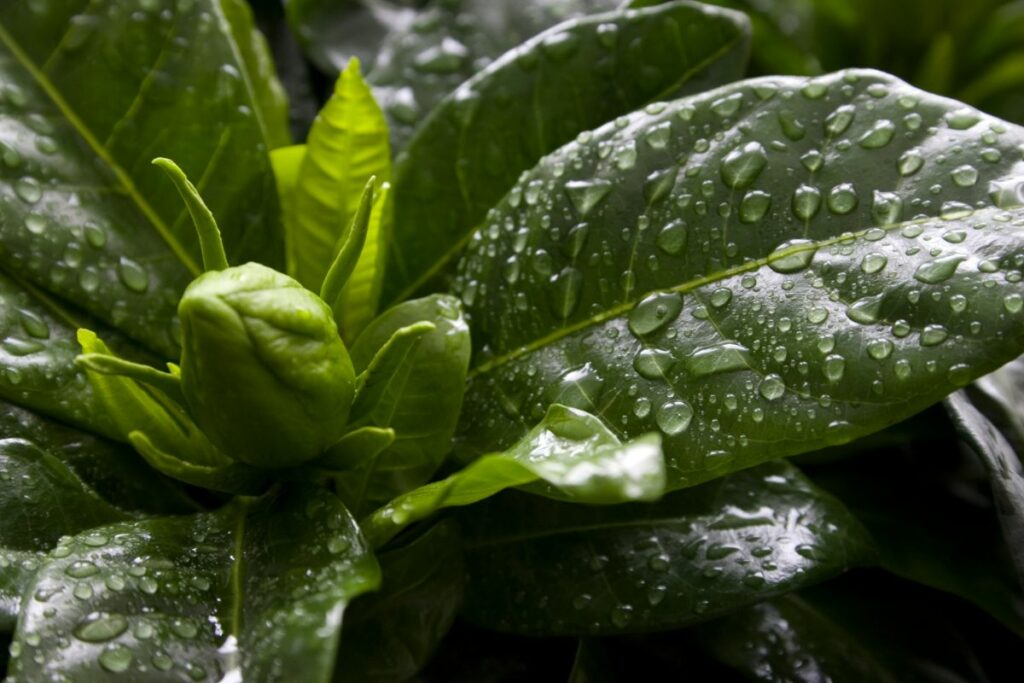The gardenia stands out in the floral kingdom with its breathtaking blooms, captivating the senses of those who grow it. Yet, cultivating this beauty is not without its challenges. Many gardeners encounter the issue of a non-flowering gardenia, a common frustration that often stems from less-than-ideal care.
Understanding the intricacies of a gardenia’s growing needs is key to encouraging it to flower. If your gardenia remains dormant, rest assured it’s primarily due to some aspect of its environment not meeting its preferences. Identifying and rectifying these issues will pave the way for your gardenia to share its enchanting blossoms once more.
1. Inadequate or Excessive Sunlight

Gardenias flourish under a precise blend of illumination, with a preference for bright conditions, tempered warmth, and substantial moisture in the air. Striking a harmonious balance among these factors can be quite nuanced.
You might observe gardenias in commercial settings bloom with vigor; this is largely due to the controlled, equatorial-like environments in which they are nurtured, such as greenhouses.
To optimize the flowering of your gardenia, aim for exposure to direct sunlight during the span of 4-6 hours daily. Direct midday sun should be avoided to prevent potential damage to your plant. Instead, seek gentle morning sunlight and offer your gardenia protection from the intense afternoon rays with some partial shade. Avoid situating the gardenia in an overly shaded area, as insufficient light can thwart its blooming efforts.
Equally critical for bud formation is ensuring your gardenia experiences periods of uninterrupted darkness, specifically a stretch of 12 hours. This means it should be placed away from nighttime artificial lights such as porch or street lighting.
While relocating your gardenia might seem like a viable solution to achieve the perfect conditions, bear in mind that gardenias are sensitive to changes, particularly when it involves their roots. Hence, it’s advisable to plan any repositioning during the fall season to minimize stress on the plant.
2. Insufficient Temperatures for Gardenias
- Ideal Growing Zones: Thrive best in USDA zones 8-12.
- Natural Habitat Conditions: Emulate the tropical climates of Asia, Australia, and Africa for optimal growth.
- Temperature Sensitivity:
- Daytime: 70-75°F is the preferred temperature range.
- Nighttime: Cooler, around 50°F, is ideal for these plants.
- Excessive Heat Effects:
- Sun Exposure: Prolonged periods can lead to bud browning and premature drop-off.
- Temperature Extremes: Can prevent buds from blooming.
Gardenias require careful attention due to their specific needs, which may deter some horticulturists.
3. Soil Acidity for Gardenias

Gardenias flourish in soil with a specific acidity level. For optimal growth, ensure your soil’s pH is 5.0 to 6.0. Falling outside this range can result in diminished flowering. To establish the right conditions, conduct a soil pH test prior to planting these valuable shrubs.
Adjusting the soil to achieve the right acidity is achievable. Should the pH testing indicate an imbalance, integrating materials like compost, pine needles, straw, or ground bark can effectively increase acidity to the desired level.
4. Soil Lacks Nutrients
Your gardenia may not flourish due to the soil’s insufficient nutrient content. Enriching the soil is necessary prior to planting. Introduce compost and aged manure into the gardenia’s soil, replenishing these additions each growing cycle as the plant exhausts them.
Monthly fertilization should commence in March and should not extend beyond August. Select fertilizers formulated for acid-loving flora, akin to Rhododendrons and camellias.
Avoid feeding gardenias late in the season to prevent tender growth that won’t withstand cooler temperatures. These shrubs begin their dormant phase in fall, a time when they don’t require nutrients.
When applying fertilizer, adherence to the package’s directions is crucial to prevent over-fertilization, which can cause root damage.
5. Insufficient or Excessive Moisture

Gardenias require just the right amount of soil moisture to thrive and bloom. Here’s how to ensure they get it:
When to Water:
- Monitor the soil: Water the plant when the top layer feels dry.
- Soak thoroughly: Ensure the water reaches deep into the soil.
Preventing Bud Loss:
- Avoid excessively dry conditions that cause gardenias to shed their buds.
Root Health:
- Watch for waterlogging due to compact soil, which can trigger root rot.
- Provide well-drained soil to keep the root system healthy.
Optimal Watering Practices:
- Refrain from watering overhead to prevent rotting foliage.
- Apply mulch: A layer of mulch conserves soil moisture and maintains cooler soil temperatures.
Mulch Benefits:
- Use pine needles or bark: These materials help maintain soil acidity.
Deep Watering vs. Drip Irrigation:
- Choose deep watering over drip irrigation to encourage deep root growth and nutrient absorption.
- Drip systems may lead to shallower roots, which can starve the plant of nutrients.
With careful attention to these moisture management tips, your gardenias will have a robust foundation for blossoming beautifully.
6. Infestation of Pests
Monitor your gardenias to ensure they remain unharmed by invaders. Frequent examination of leaves and stems is crucial for early detection and removal of common pests, such as whiteflies, aphids, and spider mites, which are attracted to gardenias.
- Preventive Actions:
- Regularly check plant foliage.
- Manually dismiss pests when spotted.
In case of heavy infestation, alternative measures might be necessary. Refrain from using chemical treatments outdoors to avoid harming your gardenias or deterring essential pollinators.
- Alternative Solutions:
- Utilize neem oil as a natural deterrent.
- Follow application instructions rigorously.
- Repeat treatment to eliminate persistent pests.
This approach helps preserve the health of your gardenias, allowing them to flourish and produce vibrant blooms.
7. Incorrect Timing for Pruning
To maintain a healthy, bushy appearance in your gardenias, light pruning is beneficial. It encourages new branch development and helps the plant keep a dense form.
- Timing: Trim your gardenias after the initial bloom cycle at the start of summer. This allows the plant to flourish without risk of cutting off new buds.
- Blossoms: Always prune after the flowers have wilted. Removing spent flowers is fine anytime, but major trimming should follow the full flowering phase.
- Multiple Flowerings: For varieties that bloom more than once per season, a second pruning session after the last bloom is crucial.
- Continuous Care: Keeping gardenias thriving demands attention to detail. Follow these guidelines to ensure they continue to produce their captivating blooms.
Remember, pruning too soon might lead to the loss of potential blooms, hindering the full experience of your gardenia’s beauty.

